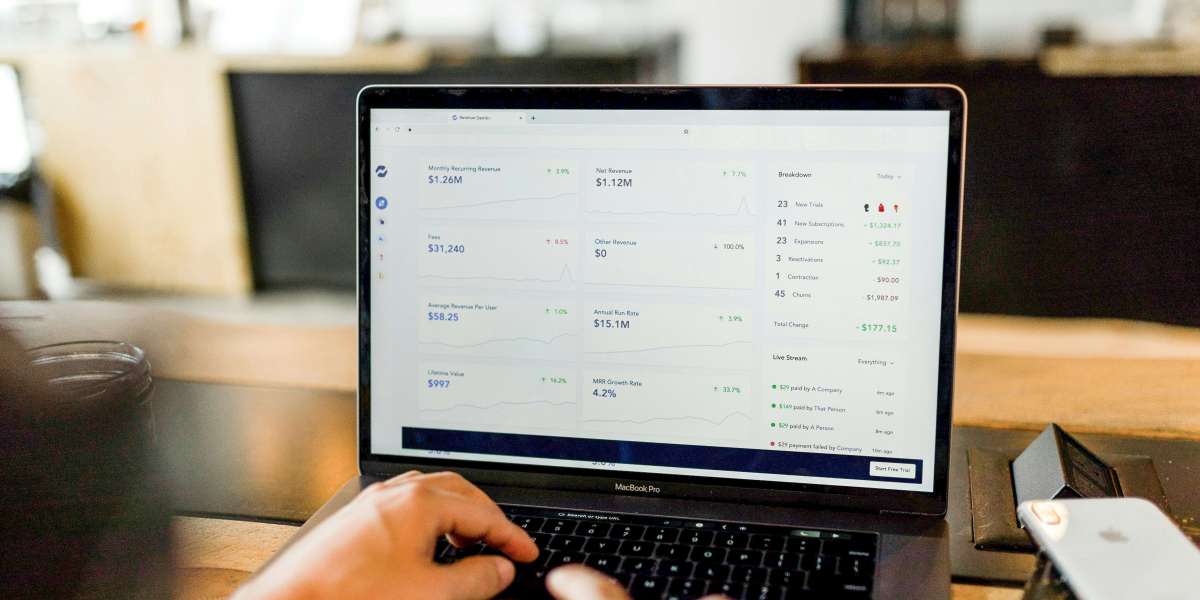In today's globalized and interconnected world, the valuation of commodities plays a crucial role in various industries and sectors. Commodity prices impact everything from the cost of food and energy to the profitability of businesses and the stability of economies. Accurate and timely commodity price predictions are essential for businesses, investors, governments, and consumers alike. This is where machine learning, with its advanced algorithms and data-driven approach, has emerged as an indispensable tool for commodity price prediction.
Understanding Commodity Valuation
Before diving into the importance of machine learning in commodity price prediction, it's essential to grasp the concept of commodity valuation. Commodity valuation refers to the process of determining the fair market value of raw materials, goods, or primary agricultural products that are interchangeable with other goods of the same type.
Commodities are typically divided into two categories: hard and soft commodities. Hard commodities include natural resources such as metals (gold, silver, copper), energy resources (oil, natural gas), and agricultural products (corn, wheat, soybeans). Soft commodities encompass goods like coffee, cotton, and sugar.
Commodity valuation is influenced by a myriad of factors, including supply and demand dynamics, geopolitical events, weather patterns, economic conditions, and more. These factors are often interconnected and subject to rapid change, making accurate predictions challenging for traditional methods.
The Role of Machine Learning in Commodity Valuation
Machine learning (ML) has revolutionized the field of commodity valuation by offering sophisticated tools and techniques to analyze vast amounts of data, identify patterns, and make predictions. Here are some key reasons why ML is essential for commodity price prediction:
1. Data-Driven Insights
Machine learning algorithms excel at processing and analyzing large datasets. They can ingest historical commodity price data, as well as various other relevant data sources, such as weather data, economic indicators, and news articles. By examining historical price movements alongside these contextual factors, ML models can uncover valuable insights that humans might overlook.
2. Pattern Recognition
ML models are designed to recognize complex patterns within data. When it comes to commodity valuation, they can identify recurring trends and seasonality in prices. For example, a machine learning model can detect patterns in crop yields, helping predict how weather conditions might impact agricultural commodity prices.
3. Real-Time Monitoring
Commodity markets are highly dynamic, with prices fluctuating rapidly due to changing supply and demand dynamics, geopolitical events, and other factors. Machine learning models can continuously monitor these markets and provide real-time updates and predictions. This capability is invaluable for traders and investors looking to make informed decisions in a fast-paced environment.
4. Risk Management
Commodity price volatility poses significant risks for businesses that rely on these raw materials as inputs. Machine learning can help companies assess and manage these risks by providing early warning signals of potential price spikes or crashes. By having a better understanding of price movements, businesses can develop more effective risk mitigation strategies.
5. Portfolio Optimization
Investors and financial institutions use machine learning to optimize commodity portfolios. ML models can recommend the best allocation of assets based on historical data and market conditions, helping investors achieve their financial goals while minimizing risk.
6. Predictive Analytics
Machine learning models can generate probabilistic forecasts of future commodity prices. These predictions are based on historical data and can help businesses and investors make informed decisions. For example, a mining company may use ML-based predictions to decide when to increase or decrease production based on expected metal prices.
7. Sentiment Analysis
The sentiment of market participants, as expressed through news articles, social media, and financial reports, can influence commodity prices. Machine learning can perform sentiment analysis on this unstructured data, providing insights into market sentiment and helping traders anticipate price movements.
Challenges and Limitations of Commodity Price Prediction with ML
While machine learning has transformed commodity price prediction, it's important to acknowledge the challenges and limitations associated with this approach:
1. Data Quality
The quality and accuracy of input data are critical for the performance of machine learning models. Inaccurate or biased data can lead to unreliable predictions. Ensuring data quality is an ongoing challenge in commodity price prediction.
2. Model Complexity
Complex ML models may require significant computational resources and expertise to develop and maintain. Additionally, overly complex models may overfit to historical data, resulting in poor generalization to new market conditions.
3. Rapid Changes
Commodity markets can experience sudden and unexpected events that can disrupt established patterns. ML models may struggle to adapt to these rapid changes, requiring constant monitoring and adjustment.
4. Regulatory Challenges
Commodity markets are subject to various regulations, and compliance with these regulations can be challenging when implementing machine learning solutions. Ensuring that ML models adhere to legal and ethical guidelines is essential.
Successful Applications of ML in Commodity Price Prediction
To illustrate the effectiveness of machine learning in commodity price prediction, let's explore a few real-world case studies:
1. Agricultural Commodity Prediction
Agricultural commodities like corn and soybeans are highly sensitive to weather conditions. Machine learning models that incorporate historical weather data, crop yield data, and economic indicators have been successful in predicting crop prices. These models help farmers make planting and harvesting decisions and allow traders to anticipate price movements based on weather forecasts.
2. Energy Commodity Trading
In the energy sector, machine learning algorithms are used to predict oil and natural gas prices. These models consider factors such as geopolitical events, production data, and weather patterns. Energy companies and traders rely on these predictions to optimize their trading strategies and manage risk.
3. Metal Price Forecasting
The prices of precious metals like gold and silver are influenced by a variety of factors, including inflation rates, currency fluctuations, and market sentiment. Machine learning models analyze historical data and economic indicators to provide forecasts that guide investment decisions for both individual and institutional investors.
The Future of Commodity Price Prediction
As machine learning continues to advance, the future of commodity price prediction looks promising. Here are some trends and developments to watch for:
1. Enhanced Data Sources
Machine learning models will increasingly leverage alternative data sources, such as satellite imagery, social media sentiment, and supply chain data, to gain a more comprehensive understanding of commodity markets.
2. Interdisciplinary Approaches
Collaboration between domain experts, data scientists, and machine learning engineers will become more common. This interdisciplinary approach will lead to the development of more accurate and robust models for commodity price prediction.
3. Explainable AI
Explainable AI techniques will gain importance, especially in industries like finance and trading. Understanding how machine learning models arrive at their predictions will be crucial for building trust and ensuring compliance with regulations.
4. Risk Management Solutions
Machine learning will play a central role in developing advanced risk management solutions for businesses exposed to commodity price volatility. These solutions will help companies proactively manage and mitigate risks.
Conclusion
Commodity valuation is a complex and critical aspect of the global economy, impacting industries and individuals alike. Machine learning has emerged as an essential tool for commodity price prediction, offering data-driven insights, real-time monitoring, risk management, and predictive analytics. While challenges and limitations exist, the application of machine learning in this field continues to evolve and promises a more accurate and informed approach to commodity valuation in the future. As data sources expand and interdisciplinary collaboration deepens, machine learning will further enhance our ability to predict and respond to commodity price fluctuations, ultimately benefiting businesses, investors, and consumers worldwide.
Source: https://diigo.com/0v10a4







